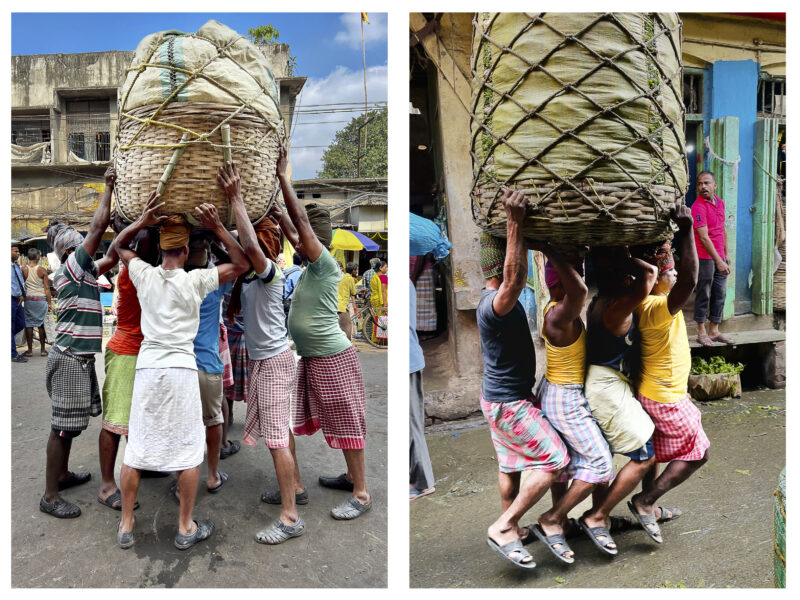Life in Kolkata: a spectacle
Kolkata is India's third-largest metropolis. Life takes place on the streets and along the waterfront. Didier and I stroll from one market or bazaar to another, and there is a relentless bustle in the downtown area. Buses and cabs honk relentlessly and rickshaws ring their bells. The streets and squares are full of stalls where vendors advertise their goods.
Barbers cut their customers' hair on the street, men wash with water from the Ganges while children stare curiously at us and other tourists. We are thirsty, so we buy a young coconut from the man with the bicycle. He skillfully opens the coconut with his machete and hands us a straw.
We enjoy its refreshing water as we stroll through the streets of the old city. Behind every corner we discover something new. Ready to join us in exploring wondrous Kolkata?
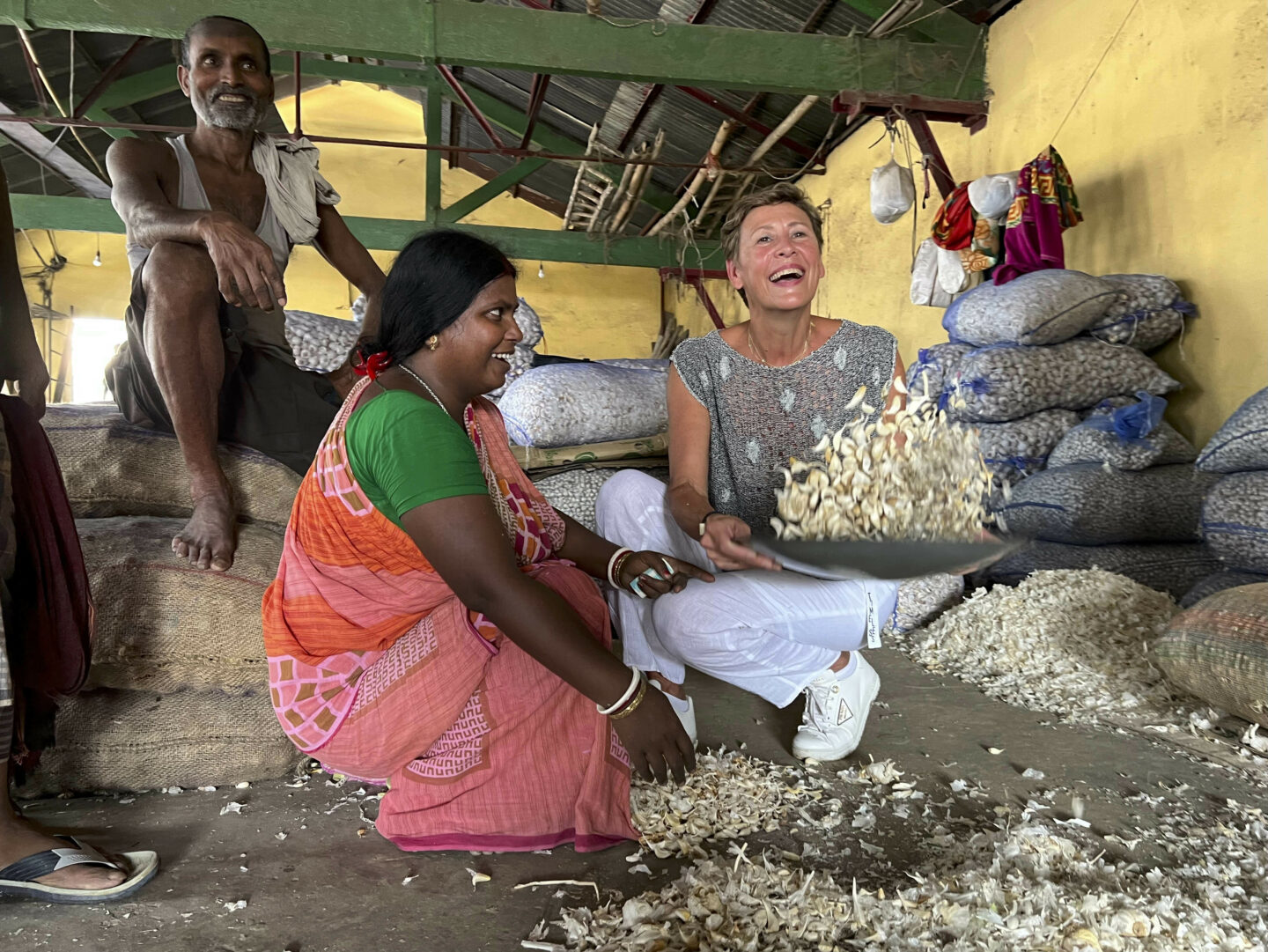
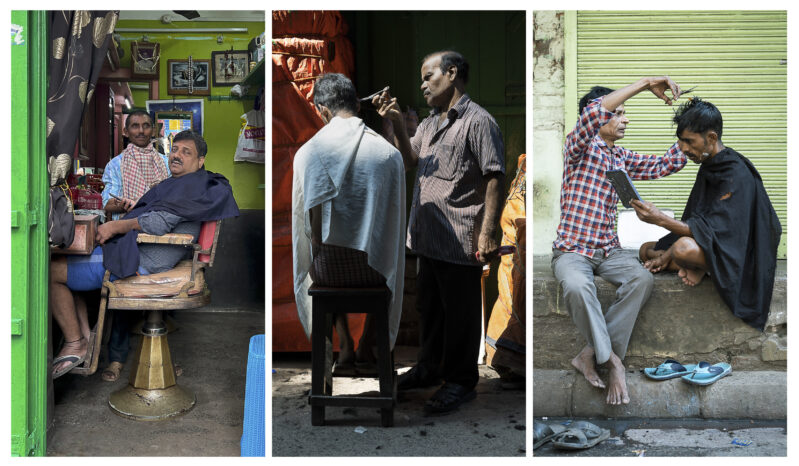
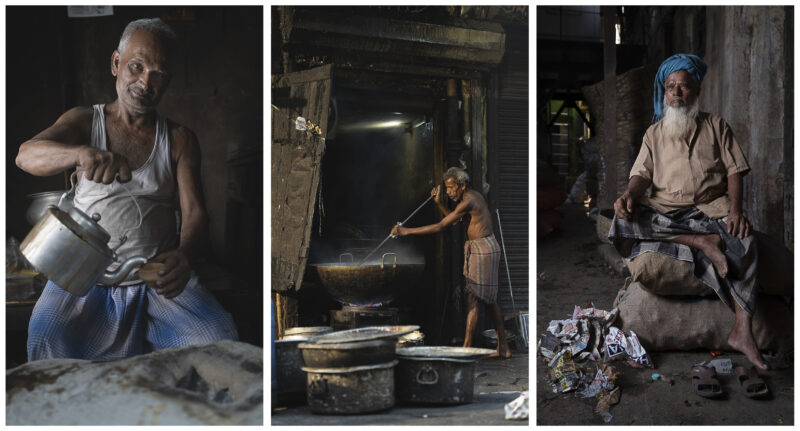
The Howrah Bridge, icon of Kolkata
The people of Kolkata are proud of their famous Howrah Bridge, and rightly so. It symbolizes access to the city and connects it to the busy Howrah railroad hub.
Already in the 19de century, there was much activity on both banks of the Ganges. The need to connect Kolkata and Howrah became increasingly urgent. The first bridge was opened in 1874, but it soon became apparent that it could not handle the crowds and heavy traffic. Therefore, a new bridge made of steel and rivets was built. That cantilever bridge opened to traffic in 1943.
Every day, 100 000 vehicles and 150 000 pedestrians cross the Ganges via the Howrah Bridge. The heavy traffic between the railway station and the famous Mullick Ghat flower market goes on incessantly. A walk on the iconic bridge is an experience not to be missed. At night, the Howrah Bridge is particularly beautiful. Then, countless lights bathe the bridge in a colorful glow.
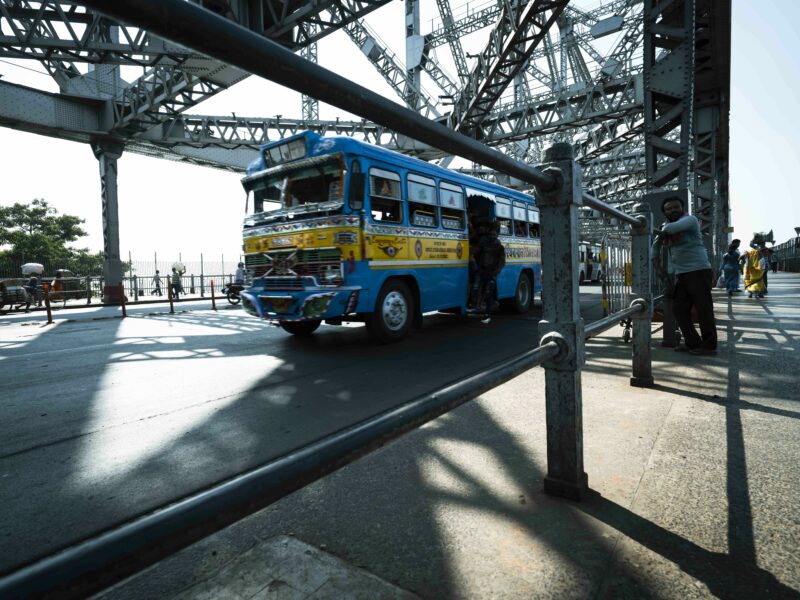
Kumartuli: ancient pottery colony
In North Kolkata on the banks of the Ganges is Kumartuli. In this maze of narrow alleys, potters make clay statues of Hindu gods and goddesses.
It is very busy here. We are at the beginning of the festival season that runs from September to February. All of India honors the important gods Durga, Kali, Laxmi and Saraswati. For weeks, locals celebrate with pujas, rituals in temples and parades with towering statues. It is here in Kumartuli that these statues are made.
The craftsman begins his work with a framework of bamboo and wood. He then attaches layers of straw. The sculpture takes further shape with clay from the Ganges bed. After a few days of drying, the sculptures are finished. Sculptors, potters, tailors and painters work together to make the finished sculpture as vivid and impressive as possible.
I walk the quiet streets of Kumartuli and visit the many workshops. The work of the artists strikes me with wonder. They are proud of their sculptures and welcome me with a friendly "Namaskar."
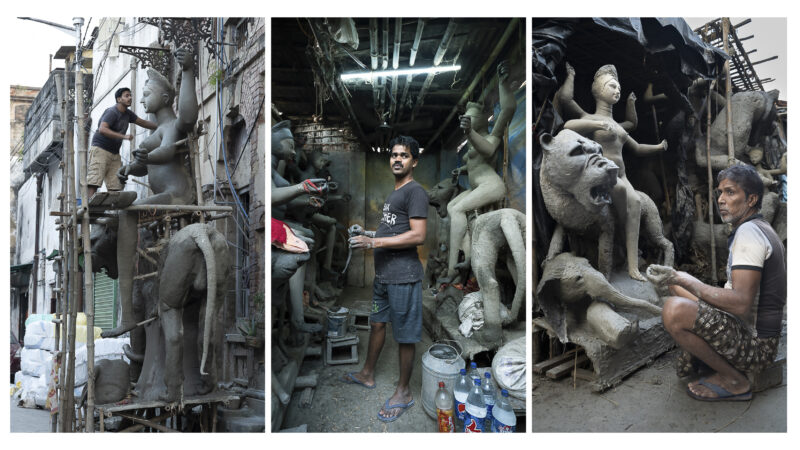
Chaos and color at the Mullick Ghat Flower Market
We continue walking along the banks of the Ganges. Near the Mullick Ghat and under the Howrah Bridge, we stop at one of the largest flower markets in India and Asia. A visit to the chaotic and colorful Mullick Ghat Flower Market is a must.
For more than 130 years, vendors have been selling all kinds of flowers here for temples, weddings and festivals. The marigold is the real attraction. The flower comes in yellow and orange, without stems, as single petals or strung on garlands. There is an abundance of jasmine, but roses, orchids, lilies and hibiscus also sell quickly. Most of these flowers are grown around Kolkata, but they also arrive from far outside West Bengal.
The thousands of flowers in all their vivid colors make a beautiful sight. Be sure to stand on the Howrah Bridge and look down on this colorful scene. You're guaranteed to bring home some fascinating photos!
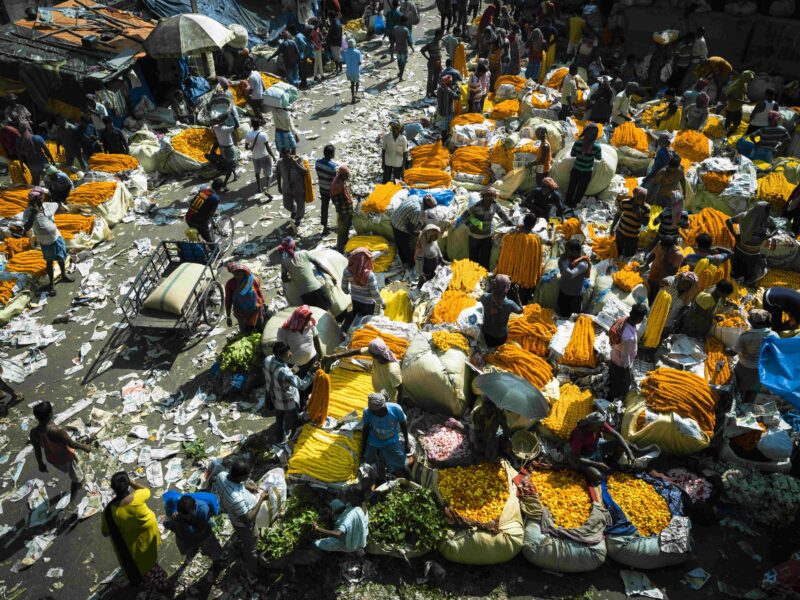
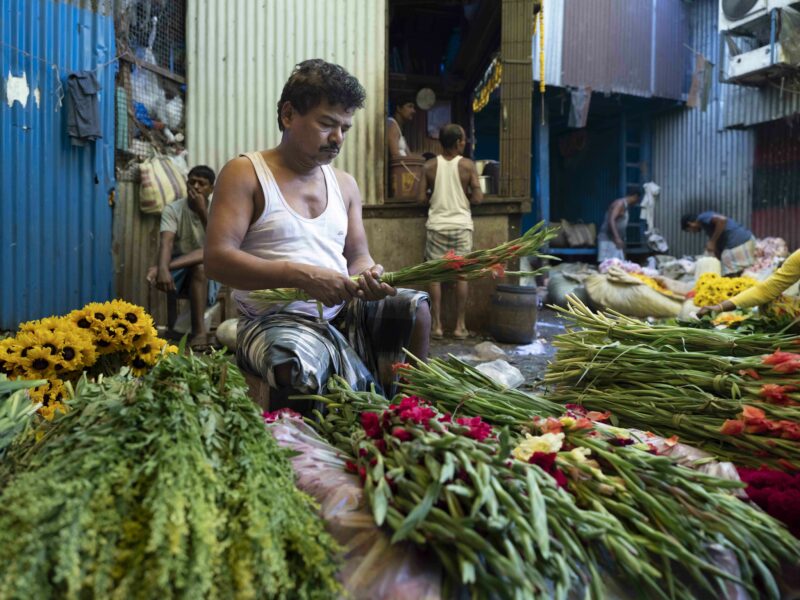
Koley Market: wholesale fruit and vegetable market
A visit to one of India's largest wholesale fruit and vegetable markets is not to be missed. Located in Bow Bazar, Koley Market is busy, loud, hot and overwhelming. Here, farmers sell their fresh goods at wholesale prices to retailers. They, in turn, sell them to private citizens in local stores and open plazas.
At Koley Market you will find potatoes, onions, cucumbers, pumpkins, ginger, garlic, fresh herbs such as cilantro and much more. About five men carry a bag weighing more than 200 kg on their heads. It’s an impressive feat. The men walk perfectly in sync all the way to their point of sale. There they drop their cargo and put the produce on display.
I am fascinated by the hustle and bustle and take the stairs to the upstairs area. There I find myself in an open space that smells of garlic and onion. Among bales of garlic sits a young woman, separating the usable cloves from dried leaves. To do this, she uses a flat wicker tray, which she expertly shakes up and down. I'd like to try that, too! My clumsiness makes her laugh and with great respect for this beautiful woman, I leave the Koley Market. This place is truly out of this world!
